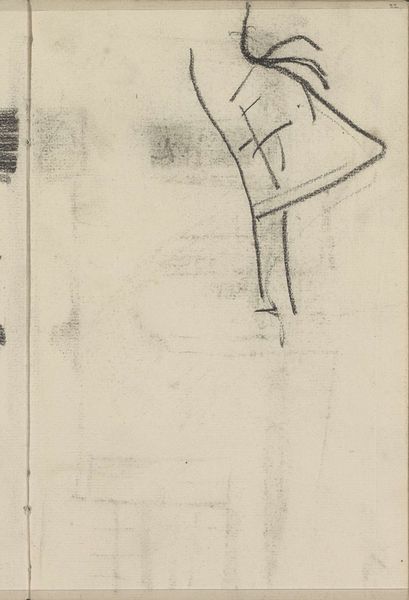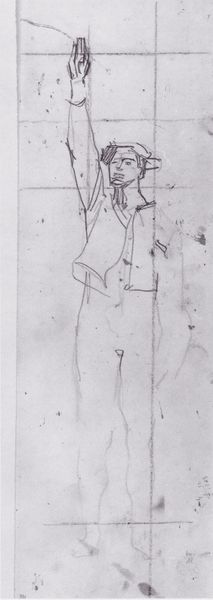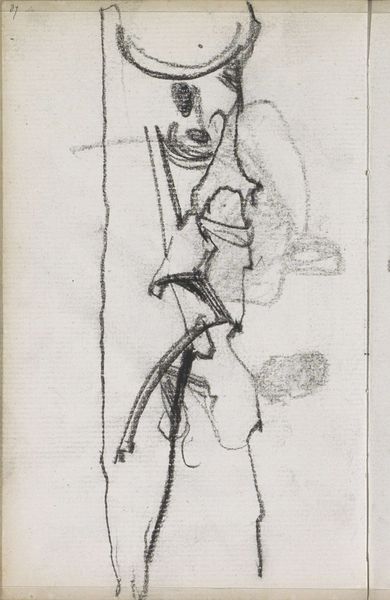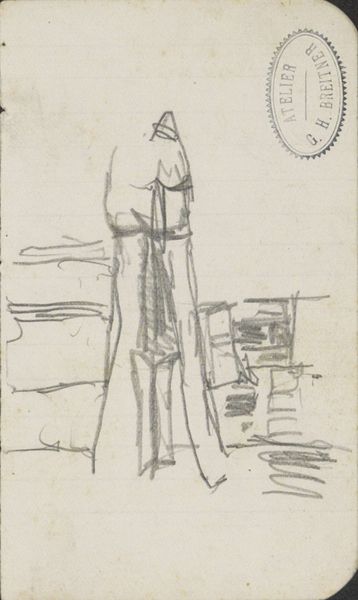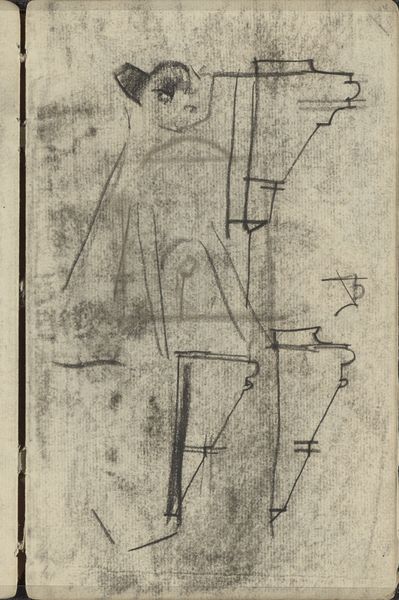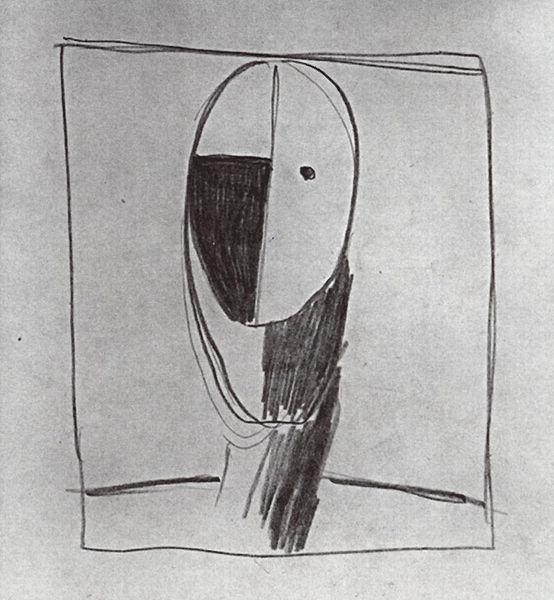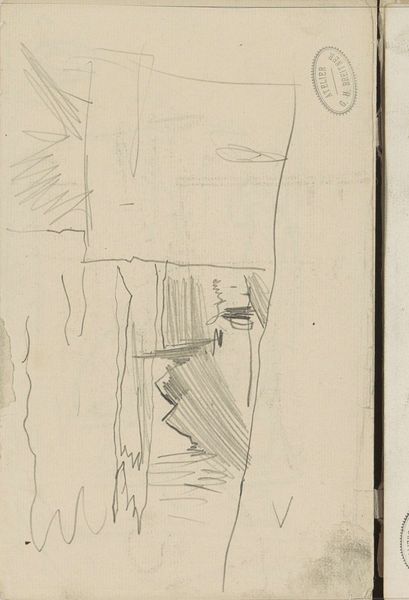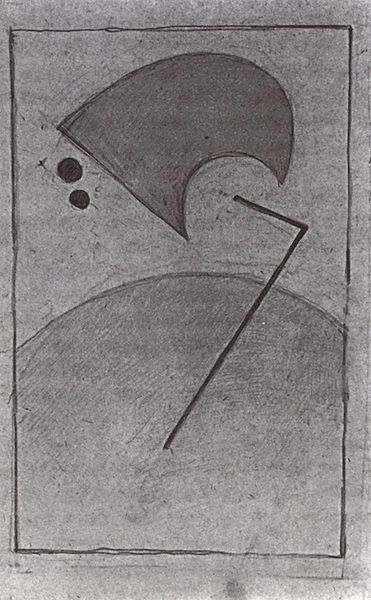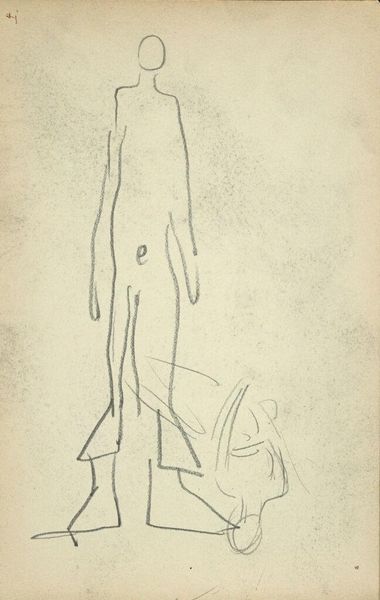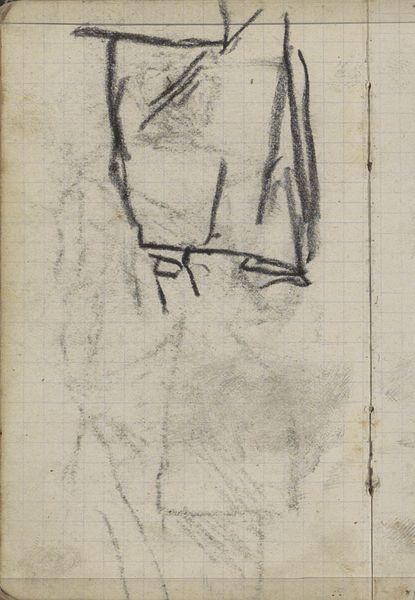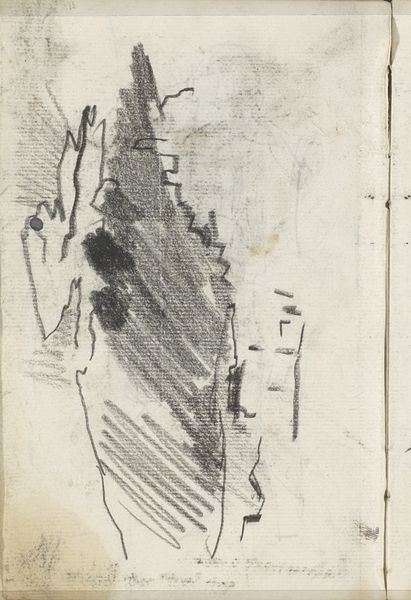
drawing
#
portrait
#
drawing
#
soviet-nonconformist-art
#
figuration
#
geometric
#
sketch
#
line
Copyright: Public domain
Curator: The somber mood is immediately evident. Stark lines forming a figure standing before a coffin, a minimalist depiction rendered in shades of gray. Editor: This is a sketch titled "A man, a coffin, horse" completed by Kazimir Malevich in 1933. Created as a drawing, the lines offer insight into Malevich's evolving perspective, though less known as part of his suprematist period, this artwork comes at a critical point in the artist’s creative trajectory. Curator: The geometry is incredibly stark; it is more conceptual than representational. He's almost flattened everything to basic shapes— a rectangle for the torso, lines for the legs. Even the horse, if that is what those lines are at the shoulder, feels like an afterthought or symbol, devoid of emotional or symbolic heft. Editor: Well, there's certainly a deliberate symbolic weighting at play. Remember the context: 1933, Stalinism solidifying. Funerals, loss of life under politically motivated repression, were all too common. The crude geometric shapes might suggest a suppression of identity under the weight of the state. That 'horse' or two horses may symbolize a yearning to escape—or reflect the horses traditionally associated with solemn occasions. Curator: I concede the biographical elements add another layer to interpretation. But formal analysis pushes us to acknowledge how the work communicates solely through the artist’s stark application of visual language and line. It lacks finesse, and perhaps that crude presentation aligns with Malevich's later artistic intent to divorce from embellishments or any figurative illusions? Editor: Possibly, but Malevich consistently sought to invest images with an intrinsic essence of human emotion. Even in its simplistic forms, the drawing conjures powerful associations of loss and maybe even muted protest—elements which persist far beyond his time and within the broader Soviet narrative. The work resonates due to both formal properties and its social implications, wouldn’t you say? Curator: Undeniably. Though the sketch seems visually concise, it yields numerous ways to view our social structures from different perspectives and interpret personal visual connections to historical happenings. Editor: Absolutely, it leaves us to confront mortality in an aesthetic paradox, doesn’t it?
Comments
No comments
Be the first to comment and join the conversation on the ultimate creative platform.
